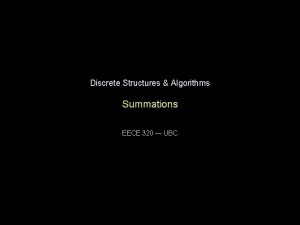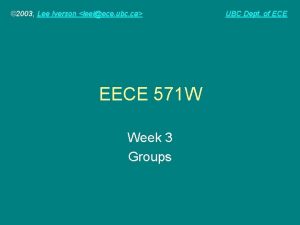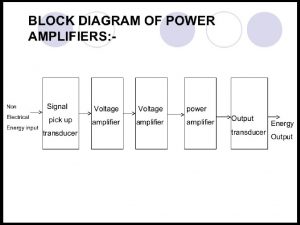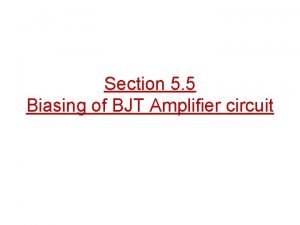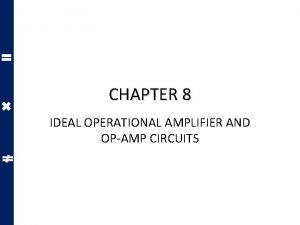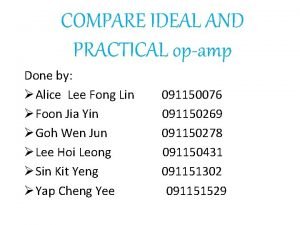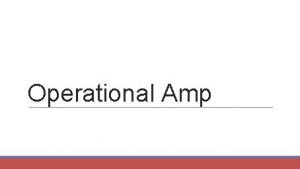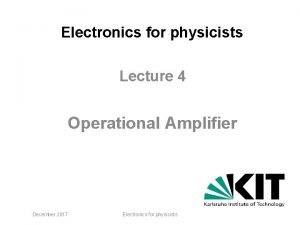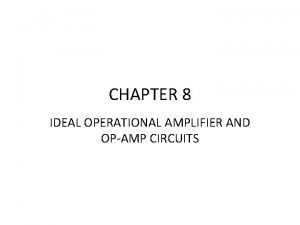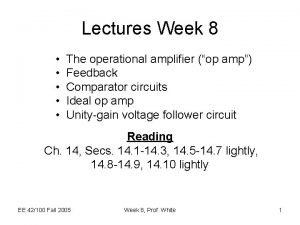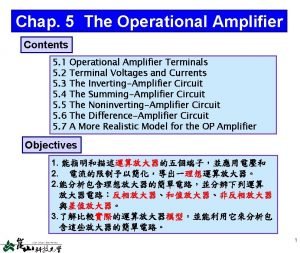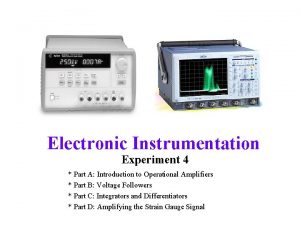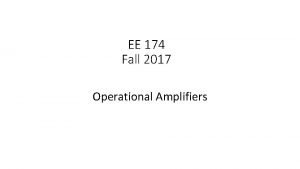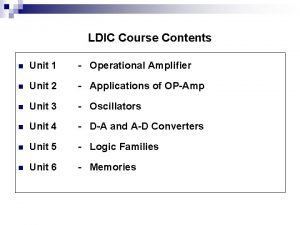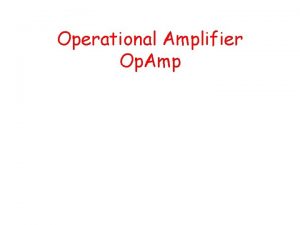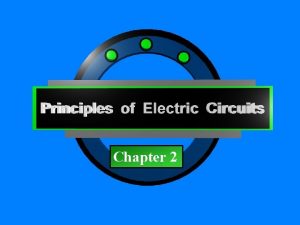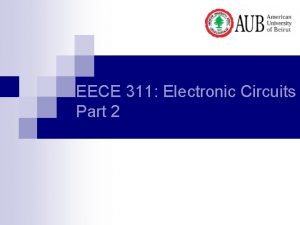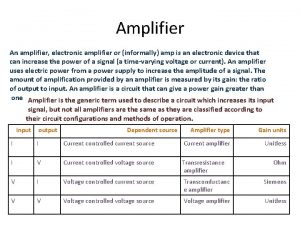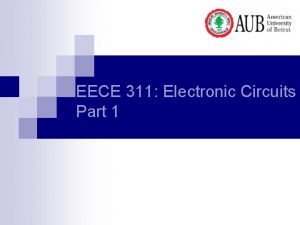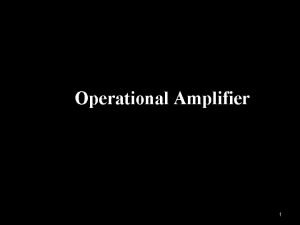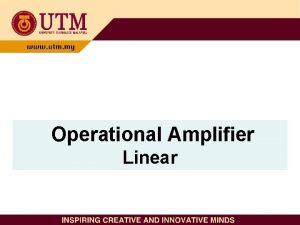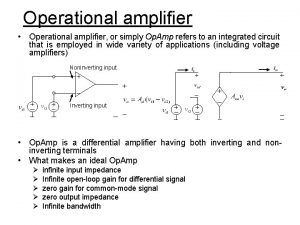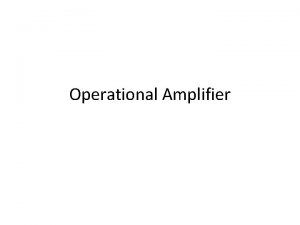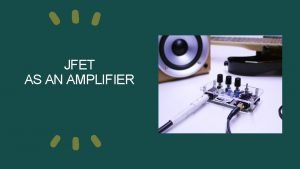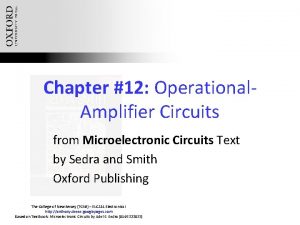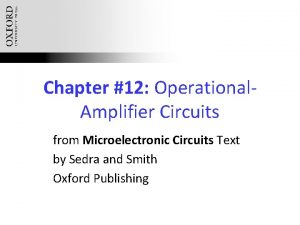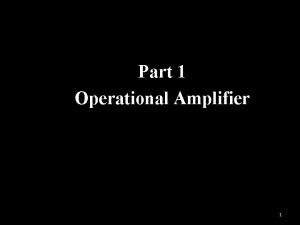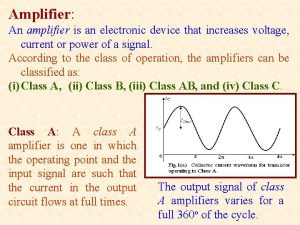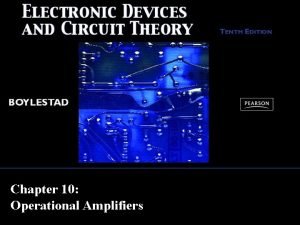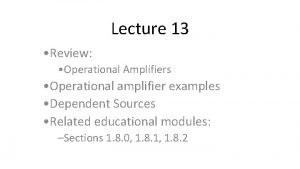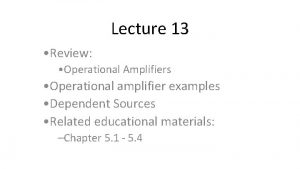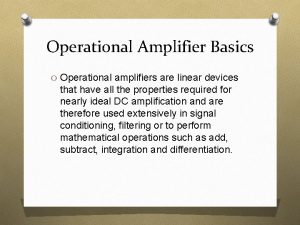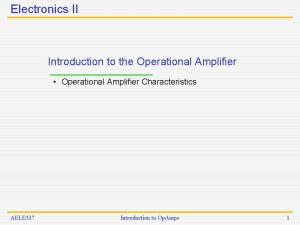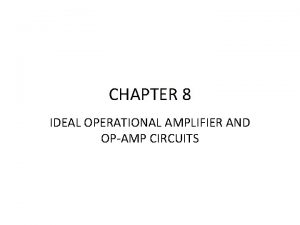EECE 311 Electronic Circuits Part 4 OPERATIONAL AMPLIFIER


























- Slides: 26

EECE 311: Electronic Circuits Part 4

OPERATIONAL AMPLIFIER 2

n Ideal Op-Amp n n Open loop gain Infinite input impedance Zero output impedance Infinite open-loop gain Infinite bandwidth … n …

n Inverting Amplifier Configuration n n Input and output signals out of phase Trade-off between a large input resistance and a large gain

¨ Effect of Finite Open-Loop Gain

n Summing Amplifier

n Non-Inverting Amplifier Configuration n n Infinite input resistance Input and output signals in-phase

n Voltage Follower n n n Infinite input resistance Zero output resistance Input and output signals are equal

n Difference Amplifier: Amplify the difference of two signals Two input signals: let Difference signal Common-mode

n Difference Amplifier: Amplify the difference of two signals Two input signals:

Common-Mode Rejection Ratio In a differential amplifier, Acm is ideally zero and CMRR is ideally infinite 11

Op-Amp Difference Amplifier Circuit 12

By superposition:


For the difference amplifier, the output should be a function of v. ID only. For the difference amplifier, Acm should be zero:

n Effect of Finite Bandwidth n fb = f 3 d. B is made very low to stabilize the op-amp

¨ Frequency Response of the Inverting Op-Amp

¨ Frequency Response of the Inverting Op-Amp n Example: R 2/R 1 = 10

n Large-Signal Operation of Op-Amps ¨ Output Voltage Saturation The op-amp output voltage saturates within 1 V of the power supplies voltages (rail-to-rail op-amps reach to within a few m. V) ¨ Output Current Limits Output current limited to a few m. A (or few tens of m. A, usually 20 m. A) in either direction (source or sink)

¨ Slew Rate There is a maximum rate of change possible at the output of the op-amp.

¨ Slew Rate For a voltage follower: For a step input V: Slew-rate distortion if dvo/dt > SR

¨ Full-Power Bandwidth The output of the op-amp can be slew rate limited or frequency limited. It is slew rate limited when (for a sinusoidal input): Frequency at which op amp stops behaving linearly n Example:

n Op-Amp Integrator and Differentiator Integrator: Differentiator:

¨ Op-Amp Integrator

¨ Op-Amp Differentiator

Simple CMOS Op-Amp
 Eece ubc
Eece ubc Eece 571f
Eece 571f Difference between voltage amplifier and power amplifier
Difference between voltage amplifier and power amplifier What is biasing
What is biasing Operational amplifier inverter
Operational amplifier inverter Difference between ideal and real op amp
Difference between ideal and real op amp Operational amplifiers
Operational amplifiers Apa itu operational amplifier
Apa itu operational amplifier Operational amplifier
Operational amplifier Gain of non inverting amplifier
Gain of non inverting amplifier Apa itu operational amplifier
Apa itu operational amplifier Summing amplifier op amp
Summing amplifier op amp Conclusion operational amplifier
Conclusion operational amplifier Operational amplifier experiment
Operational amplifier experiment Ideal op amp assumptions
Ideal op amp assumptions Lm351 op amp
Lm351 op amp Buffer output impedance
Buffer output impedance Current in a parallel circuit
Current in a parallel circuit Principle of electric circuit
Principle of electric circuit Electronic warfare operational support
Electronic warfare operational support Scrip exchange
Scrip exchange Electronic news gathering and electronic field production
Electronic news gathering and electronic field production Gc 311
Gc 311 Ssis 311
Ssis 311 Art 294 a 311 novo cpc
Art 294 a 311 novo cpc Bcd addition of 184 and 576
Bcd addition of 184 and 576 Psyc 311 study guide
Psyc 311 study guide
